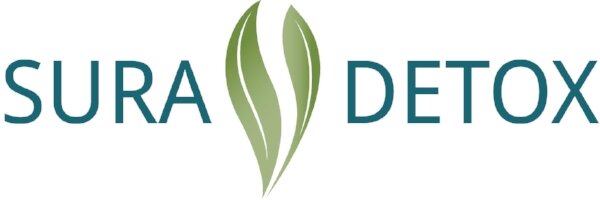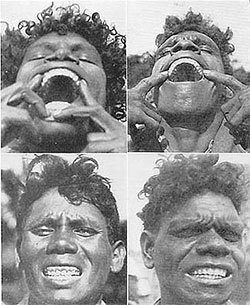
A Brief History of Teeth
They have greater compression strength than reinforced concrete, they spontaneously regenerate, and are primary to the whole eating process.
However, they are susceptible to destruction by the very same natural forces that have been building them in animals for millions of years.
So what changed ?
A History and Hope for Teeth
Saving the stomach and gut masses of work in breaking down the cellular structure of the food we eat, our teeth literally smash through the fibres in food. This then reveals some of the nutrient component of food, allowing the rest of the digestive system to turn on the chemical mechanisms that will be needed to break down that exact meal.
As well as the infamous calcium (see why calcium is such a problem with because of modern eating methods here), teeth are composed of numerous minerals.
Enamel
The white part of the tooth normally exposed to air, moisture and food. It is therefore the hardest, most mineralized part of the body.
96% of the enamel is made of calcium phosphate, with a little water and organic material composing the rest.
Dentin
The tissue under enamel is secreted by cells within the tooth core. It is a mineralized organic made of proteins.
Approximately 70% inorganic materials, 20% organic materials, and 10% water. Because it is softer than enamel, this is where cavities begin if exposed to food and bacteria.
Cementum
A bone-like material covering the root of a tooth, to which the periodontal ligaments attach the tooth to the jaw.
It is approximately 45% inorganic material, 33% organic material collagen, and 22% water.
Pulp
The soft center (and root canal) contains blood vessels and nerves that enter the tooth from a hole at the apex of the root. It is the living core, which feeds information back to the nervous system about the condition of the tooth and the environment around it (temperature, etc)
Calcium
Because of our cultural problems with this element, we associate tooth-health to acquiring enough calcium, and protecting it from sugar.
Which is another mislabelling of the mechanisms at play.
None of our closest relatives, or indeed any other animal in its natural state have tooth problems like our’s, except of course those animals that we feed and tend. They notably do share our dental worries, and a whole industry has sprung up around their maintenance.
So surely we must ask why. It is a two-fold process.
Nutrient Supply
Unlike all the other organs in the body, teeth do not get the majority of their nutrients from the blood. There is, after all, no blood supply to most of the tooth, so the necessary components to maintain their health must come from elsewhere.
Tooth enamel and dentin are primarily remineralised from the saliva. But this depends upon several factors.
Obviously the saliva needs sufficient minerals to deliver to the teeth, but the nutrients are delivered to the tooth via ionic pressure within the saliva. This means that the pH and electrolyte balance in the mouth are critical for delivery to work. All being well, the minerals in the saliva are literally attracted into the tooth, where they are fixed and held.
If the pH balance is switched, then minerals become leeched from the tooth surface in order to correct the imbalance.
Thus calcium, etc., are either pushed into teeth or extracted from them depending upon this balance of accounts.
Bacteria
The greatest factor in determining ph balance in the mouth is the bacterial content – and this is where we depart from nature.
All other animals have populations of bacteria in the mouths that aid the ionic process. That is why they never need to clean their teeth. Because the bacteria that live in their mouths are working for them to strengthen their enamel.
Only in the human being do we see the situation current amongst modern humans.
Consuming masses of foods previously unknown to our bacterial inhabitants, we have managed to starve them out of existence and invited different bacteria in their place, literally by feeding them. See more on how this works here
Now our populations are consuming refined sugars, refined starches (grains, potatoes, etc.) and producing bi-products (acids) that aid the leaching of minerals from our teeth. This is wholly new, and totally different to the preceding millions of years.
Thus, we have a cultural association with eating too many sugars (feeding the bacteria to produce acids that leech minerals) as well as cleaning teeth (constantly attempting to strip our mouths of the bacteria we are establishing with our diets) and tooth maintenance.
Antibiotics for the Mouth
We are in the insane situation of constantly sterilizing our mouths with materials known to be detrimental to the whole body (sterlizers are by nature poisonous, as well as hardening materials like the controversial Floride argument).
After every cleansing of the mouth, we leave an almost sterile environment into which grow more detrimental bacteria and the story starts afresh every morning.
This is as erroneous and problematic as the 50s idea that we can just be consuming antibiotics everyday to avert disease.
Weston Price
In the 19th century a philanthropic dentist toured the world looked for the reasons for our terminal tooth problems, having noticed that no other animal has to go through the routine on a daily basis (without achieving the desired result – IE: we still have dental problems).
He studied endless tribes across the then undeveloped world, and noticed stark, obvious and informative facts.
Prior to development, all the cultures he studied had fantastic teeth, broad skulls, large nasal cavities, and plenty of room for teeth to grow, as well as maintaining their tooth health without much or any maintenance.
As development set in, and their diets consisted more and more of processed foods, all of these factors fell, leaving them with less room in the mouth, more dental problems and many more cavities.
He put this down to several factors and mechanisms, but the primary cause we are concerned with here was a film over much of their teeth. Sometimes it was slightly green, other times milky white, or partly beige – depending upon the diet, country and age of the person.
After some rudimentary testing he concluded that the film was made up of a mix of bacteria native to the mouth of human beings, which was lost with the introduction of refined foods.
Dental Arches
Another dramatic difference he saw was the collapse of the dental arch – the girth of the arc that makes up the upper and lower jaw.
A broad arch allows plenty of space for new teeth to come in, and space for the gums to function well.
He hypothesised that as children started to be fed dairy instead of mother’s milk, the perfect nutritional balance that allowed the development of the dental arch was replaced with less useful compounds found in cow’s milk.
Breast Feeding
Moreover, as an infant suckles at the breast, it must suck quite hard to latch on and achieve sufficient milk flow. Babies bottles are a much ‘better’ design, but the ease of milk flow is counterproductive to the development of the dental arch.
As an infant at the breast is sucking hard for many hours a day, the maleable bones that make up the skull in youth, are forced apart, and thus they grow with a wide, even spread to them. This stimulates further expansion of the skull after birth and benefits later dentition and sinus development (the largest and most troublesome part of human birth is the passage of the massive cranium through the illeal floor as it passes down the birth canal, so it is kept at minimum size for that process).
Wodging
So, this bacterial balance in the mouth is best maintained like all balance in the body. Simply by eating foods that benefit and breed the right bacteria. But do we have any of them left in our mouths at all?
My understanding is that the bacteria found throughout the digestive system are present in the live, raw foods we can consume.
Some apes have been seen to go further and actually perform something called ‘wodging’. The put a handful of leaves in their mouth and chew them into a pulp, but they do not swallow. They leave this mineral-rich pulp in their mouths, thus aiding both the bacterial balance and mineral content of their saliva.
That would be a good place to start.
Bad breath
It has long been known amongst herbalists that the best route to curing bad breath (detrimental buildup of bacteria in the mouth that then ferment foods and give off noxious gases) is to chew on certain leaves – primarily parsley. Not only is this a useful tool for neutralising the gases, also alleviating the bacterial balance.
In Conclusion
While eating a dominance of raw foods is the best start for any of the body's disorders, it is not enough to correct all of them these days
We are so deficient in nutrients and good bacteria, that there is often a long period of remineralisation required to correct imbalances. The same is true of bacterial imbalances also.
There are products on the market specific to repopulating the mouth with the right bacteria, but few have made the leap to ending the disinfecting cycle of cleaning the teeth altogether.
After a long period of using mouth probiotics, soil-based organisms, and raw food (probably including lots of wodging too), plus deminishing use of harsh tooth pastes, it may well be possible to recreate the bio-film found on the teeth and end the cycle altogether.
There are many examples of less harsh tooth cleaning materials (baking soda / salt, etc) but each must tread carefully on their own path of changing these deep patterns.
Reference Papers
Timing of Mouse Molar Formation Is Independent of Jaw Length Including Retromolar Space
by Daisy (Jihyung) Ko,Tess Kelly,Lacey Thompson,Jasmene K. Uppal,Nasim Rostampour,Mark Adam Webb,Ning Zhu,George Belev,Prosanta Mondal,David M. L. Cooper andJulia C. Boughner
J. Dev. Biol. 2021, 9(1), 8; https://doi.org/10.3390/jdb9010008 (registering DOI) - 12 Mar 2021
Universal Adhesive for Fixed Retainer Bonding: In Vitro Evaluation and Randomized Clinical Trial
by Maria Francesca Sfondrini,Simone Gallo,Benedetta Turcato,Mona A. Montasser,Nehal Fouad Albelasy,Pekka K. Vallittu,Paola Gandini andAndrea Scribante
Materials 2021, 14(6), 1341; https://doi.org/10.3390/ma14061341 - 10 Mar 2021








